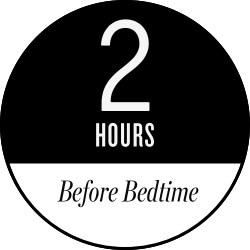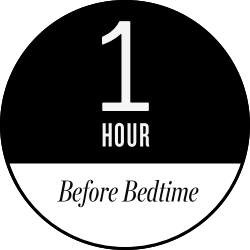You don’t need us to tell you that America is sleep-deprived. How are you feeling today? Could you be more rested? Would you like a nap later, if possible? According to the Centers for Disease Control and Prevention, about a third of adults in the United States reported not getting enough sleep regularly. Nearly 40% of adults report falling asleep during the day without meaning to at least once a month.

Sleep, these days, feels like a luxury that should be attainable and yet is often just out of reach. It's so valuable to us that many say we'd easily give up things to get more rest. A 2022 sleep study found that 63% of Americans consistently hit the snooze button to feel just a little better. Researchers found that a vast majority would skip breakfast to save more time for sleep and 29% would forgo their morning showers, with 27% even will to skip brushing their teeth in order to sleep a little longer. But what if there was an easier way?
It's called the “10-3-2-1 Sleep Formula”, and it's backed by everyone from Dr. Jess Andrade, a sports medicine physician, to Dr. Peter Tierney, a performance coach who's had stints with the England national football team. The formula is a daily game plan involving specific activities leading up to bedtime that will create a regular and reliable sleep routine. The numbers each represent something you should try to limit before heading to bed. In truth, it's not all that revolutionary and it's fairly simple to implement, but that's the beauty of it.
This simple yet effective strategy provides a structured routine to help you fall asleep fast and improve the overall quality of your slumber, all while enhancing your overall health. This is not a quick wind-down before you get ready for bed. Instead, it's more of a playbook of rules to consider throughout your whole day, setting the stage for a peaceful and rejuvenating night's sleep. Once you set your desired bedtime, it's easy to follow without feeling like you're giving up anything that you love. Let's break down each component of this rule, using the average American bedtime of 11:45 p.m.
Advertisement

No More Caffeine
Caffeine is a stimulant that enters your bloodstream about 30 minutes after you consume it. It affects the body by blocking adenosine receptors that make you sleepy and reducing slow-wave sleep. It can also increase restlessness. The 10-hour cutoff ensures that your body has enough time to metabolize caffeine fully. This means avoiding coffee, tea and other caffeinated beverages in the evening.
» The coffee cut-off: 1:45 p.m.

No More Food or Alcohol
Digesting food and alcohol has long been known to disrupt your sleep. By allowing a three-hour gap between your last meal and bedtime, you give your body sufficient time to process and digest. Avoiding alcohol before bed will also help you sleep better. You'll get full REM sleep and wake up refreshed.
» Last call for dessert and drinks: 8:45 p.m.
Advertisement

No More Work
Disconnect from work-related activities at least two hours before bedtime. Why? It's known to heighten your anxiety and overstimulate your brain. This includes avoiding emails, work calls and other job-related tasks. If the anxiety of having more to do is keeping you up, try creating a to-do list for the morning. You'll be able to rest and feel prepared for the next day.
» Sign-off: 9:45 p.m.

No More Screens
The average American spends about 50 minutes on their phone before bed, and most keep an electronic device in their bedroom. The problem goes deeper than the blue light that screens emit. The information you're receiving not only stimulates your brain, but it can make you anxious or lose track of time. Health experts have determined that late-night screen time is a primary cause of “social jet lag”. Give yourself an hour of analog time before getting into bed. Use that time for self-care, stretching or reading a paper book.
» Phone down, laptop shut: 10:45 p.m.
As you can see, it's not all that restrictive. In fact, most of us probably manage at least two of the four most days. But as you adjust your daily schedule and start following this plan, your body will adapt and prepare itself for sleep naturally by adjusting your sleep-wake cycle hormones. The end result is you laying down in bed and falling asleep quickly and staying asleep for some quality shut-eye.
Deep Sleep
Happens First
The first three hours of sleep contain the deepest stages of sleep (Slow Wave Sleep). Later on in the night we have more of the sleep stage with vivid dreams (Rapid Eye Movement Sleep, REM sleep).
Advertisement

































